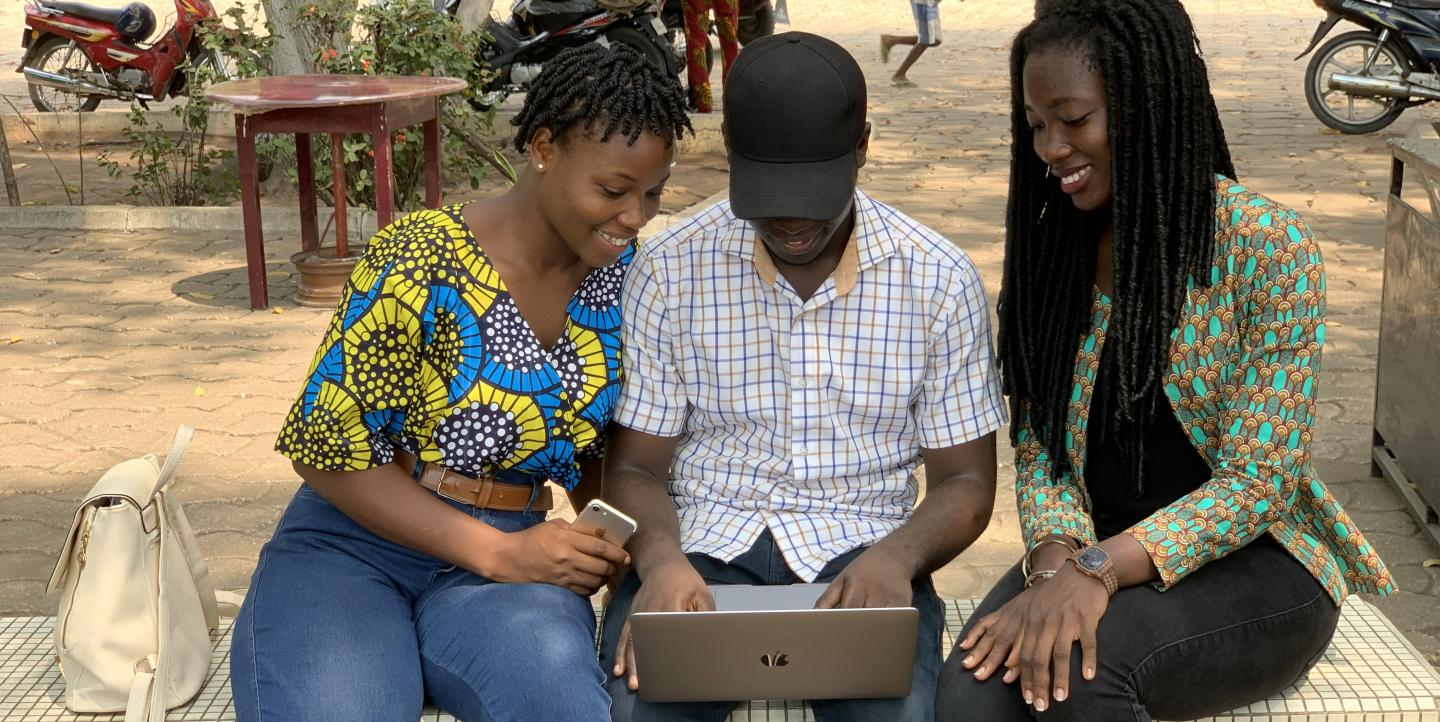Over the past few decades, Kenyans have come to terms with historical revisionism perpetrated since the time of British occupation. Many of the country’s history books do not tell the full story of the years leading to and following independence, while stories from older generations who fought for independence and witnessed the beginning of the nation are being passed down less frequently.
In an effort to preserve their history, Kenya’s current generation is working to fill in these gaps through digital archiving on social media. Here are a few Twitter accounts that are leading the way:
African Digital Heritage
Determined to combine her background in computer science with her passion for history, digital archiver Chao Tayiana Maina founded African Digital Heritage (ADH), a Nairobi-based nonprofit that creates digital methods to engage critically with African heritage. A standout of their archival process are 3D renderings and mappings of historical sites in Kenya.
ADH uses social media in three ways: to communicate their work to their audience, to communicate histories that have been suppressed and marginalized due to a lack of popular access to archives, and to crowdsource lost histories. “Social media has been a way to mobilize these [forgotten] histories. The way we were taught to interact with history in school made it seem like archives and museums are more for foreigners or tourists,” said Maina. “So we share text-based records, videos, audios, archival film and the likes for accessibility to the public."
Museum of British Colonialism
Since Maina co-created the Museum of British Colonialism (MBC)'s Twitter page in 2017 as an extension of her archival work with ADH, it has amassed over 12,000 followers. A joint collaboration between volunteers from the U.K. and Kenya, the museum strives to present a more truthful telling of the history of British colonialism in Kenya. The account achieves this by interviewing elders who survived colonialism, and through photographing sites that serve as evidence of the hidden histories of British occupation in the country.
“We started it as a challenge to the idea of what a museum could be,” said Maina. “Though we were pushed to the online space due to a lack of funds, we are also confronting the idea of the traditional sterile museum experience where you are not allowed to touch anything and you somberly walk through a building briefly stopping to read plaques placed beside paintings or sculptures or exhibits and then walk out.”
The MBC recently expanded beyond the digital space, holding physical exhibits to display their findings in both the U.K. and Africa.
HistoryKE
In 2015, *Fred, who is passionate about history and photography, was prompted by his friends to start the Twitter account HistoryKE based on his knowledge of Kenyan history.
“I started a Facebook group for diasporans who would share memories and facts about East Africa. Then I graduated to my own page. I decided to open Instagram and Twitter accounts as well, and the rest is history,” he said.
The strength of HistoryKE’s Twitter account comes from Fred’s ability to tell stories through Twitter threads. One of his most shared threads covers the Kedong massacre of 1895, in which members of the Maasai tribe killed hundreds of Kikuyu and Swahili men.
“Most of my content is consumed by people under 30. So that’s why I chose social media. If you hide knowledge in a website, Kenyans won’t read it, but if you post directly on to the social platforms, you can go viral,” he said.
Fred has since collaborated with the National Museums of Kenya, the U.S. Embassy in Kenya and the Too Early for Birds theater collective. He hopes for his stories to be animated in the future, so that he can reach an even wider audience in Kenya and abroad.
Geography of Kenya
For the past three years, Nairobi residents Mohamed Boru and Albert Gicheha have explored Kenya and shared what they discovered via their Twitter account, Geography of Kenya. Through a combination of maps, internet research and on-the-ground fieldwork, Boru and Gicheha have crafted threads that investigate geographic features across the country within their human context. The aim is to be “a showcase of the country’s geographical features and how they shape lives,” according to the duo.
Boru and Gicheha chose Twitter as their platform of choice for two reasons: “[One,] Twitter has a timeline that is chronological, allowing for visibility and growing a following in a more organic way than say, Instagram,” said Boru. “Two, Twitter attracts a more intellectual crowd that seemed [to be] a natural fit for the kind of informative, bite-sized captions accompanying our photos and videos.”
Nevertheless, the pair recently expanded beyond Twitter. “We've now started mini-documentaries on YouTube,” they said. “We've [also] made significant progress towards production of video documentaries on Kenya's geography and history, [which was] our goal from the start.”
Challenges
Although these accounts continue to work to combat historical revisionism and keep younger generations informed about their history, they still face several challenges unique to their use of social media. For one, these digital archivists are not paid for their labor. Most have full-time day jobs, while archiving is their side passion.
Online vitriol directed at the accounts or their owners is also an issue, said Fred. Kenya’s 42 tribes sometimes have contentious histories and politics, such as the events surrounding the Mau Mau rebellion that led to Kenya’s independence. This can take the form of claims that these accounts are pushing certain agendas. “There are also, from experience, many [Kenyans on Twitter] who have strong opinions on Kenya’s history, in a recalcitrant way, and will oppose many things,” said Fred. “One way of them doing so would be to seek ‘context’ or cite ‘lack of context’ and dismiss a history post or thread."
There are large gaps in history when it comes to particular events, too. Colonial documents and photographs often painted native Kenyans as savages, rather than just as people with a different way of life. Meanwhile, today many photos and documents are under copyright, preventing the free sharing of these invaluable histories.
The work of digital archiving across these accounts has largely been positive, however, and growing, with historykenya101, kenya_archives and KResearcher as several new examples. “The lack of bureaucracy in an editorial process has led to the creation of diverse content that shows different sides to Kenya beyond the usual topics,” said Boru and Gicheha. “This diversity of content, the wide reach and the Kenyan nature of it goes some way in building a national identity and a sense of ownership of our country.”
*The individual prefers to keep his anonymity due to his day job in a global tech company.
Photo by Iwaria on Iwaria.


